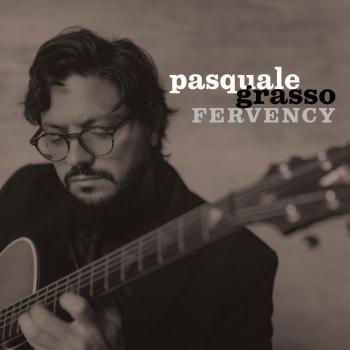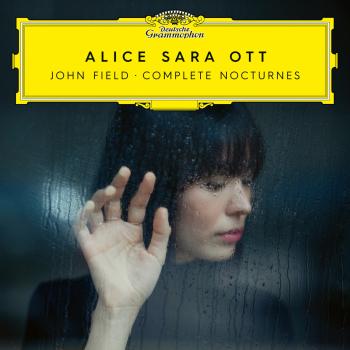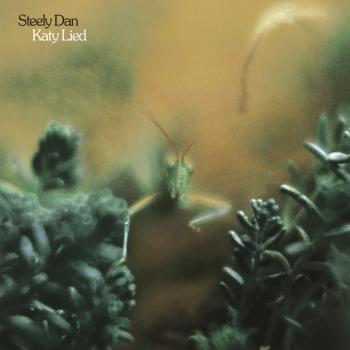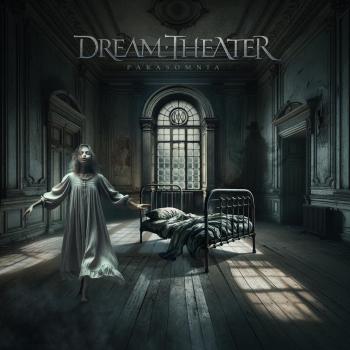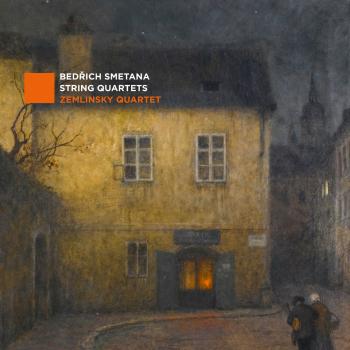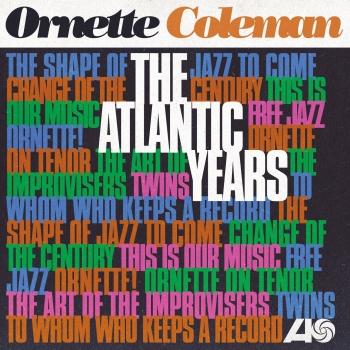
Change Of The Century Ornette Coleman
Album info
Album-Release:
1960
HRA-Release:
13.07.2012
Label: Warner Music Group
Genre: Jazz
Subgenre: Free Jazz
Artist: Ornette Coleman
Composer: Ornette Coleman
Album including Album cover
I`m sorry!
Dear HIGHRESAUDIO Visitor,
due to territorial constraints and also different releases dates in each country you currently can`t purchase this album. We are updating our release dates twice a week. So, please feel free to check from time-to-time, if the album is available for your country.
We suggest, that you bookmark the album and use our Short List function.
Thank you for your understanding and patience.
Yours sincerely, HIGHRESAUDIO
- 1 Ramblin' 06:37
- 2 Free 06:21
- 3 The Face Of The Bass 06:57
- 4 Forerunner 05:15
- 5 Bird Food 05:29
- 6 Una Muy Bonita 06:00
- 7 Change Of The Century 04:43
Info for Change Of The Century
Change Of The Century was an audacious album title, to say the least. On his second Atlantic release—and second with his most like-minded ensemble (trumpeter Don Cherry, bassist Charlie Haden and drummer Billy Higgins)—alto saxophonist Ornette Coleman pushed the freedom principal farther. At the same time, he looked backward too for inspiration. Having eliminated the piano on his Contemporary release, Tomorrow Is The Question! (1959), Coleman opened up wide improvisational opportunities. On that recording, he and his 'freedom principle' remained partially inhibited by the presence of traditionalist bassist Percy Heath and drummer Shelly Manne, who resisted coloring outside of the lines as Coleman was attempting to do. But that was not so on The Shape Of Jazz To Come (Atlantic, 1959) and Change Of The Century. While the rhythm section continued to provide enough cohesive swing to propel matters, Coleman and Cherry stretched the melodic boundaries without the previous harmonic anchors.
Change of the Century is compelling in its embrace of contrasts. 'Ramblin'' is funky organic, almost early rock and roll. Haden plucks and strums his way through a fractured 12-bar format that never fully resolves itself into the comfort of the anticipated. Coleman's solo over Haden's support is bar-walking rhythm and blues, lowdown and dirty, smelling of beer and Lucky Strikes. Cherry plays his famous pocket trumpet, sounding closer to Lee Morgan than anyone else, squeezing out hard bop lines like sparks from a metal lathe. Haden solos using the figures he has supported the whole piece with. His intonation is middle-of-the-note, relaxed and slightly wooden. 'Ramblin'' retains an erstwhile harmonic structure, albeit only barely.
The head of 'Free' is an odd premonition for composer/saxophonist Oliver Nelson's 'Hoedown' from The Blues and the Abstract Truth (Impulse!, 1961), passing through an ascending and descending blues figure. Haden is rock solid throughout, even when the solo-going gets ragged and frayed. Higgins' accents are as potent as pepper, shoring up the edges of chaos on the briskly-timed piece. 'The Face Of Bass' gives prominence to Haden while at the same time sounding strangely traditional for an album entitled Change of the Century. But it is a facade. Coleman encourages a careful abandon in the piece's overall structure and arrangement. Cherry pops on his solo, sometimes sounding like Freddie Hubbard, sometimes, Art Farmer.
'Forerunner' pretends that it is bebop, with a serpentine head and a deft drum break by Higgins. Coleman's solo is inspired, quenched in gospel and the blues. His tonal expanse is as big as his native Texas, informed by the many great tenor saxophone players from that state. Cherry emerges assertive, playing with swagger and attitude. So well constructed and delivered is his solo that it is easy to forget that a move toward a freer musical system is in the works. Haden remains stalwart in time-keeping, shepherding everything between the rhythmic ditches. The same can be said for the Charlie Parker-inspired 'Bird Food,' which is surveyed at a fast clip over a complex note pattern.
'Una Muy Bonita' is only passing Latin, with pianist Thelonious Monk phrasing and side- winding playing. Haden sets up a familiar clave beat with strummed chords. Coleman stages the piece to more insinuate a Latin vibe than to actually play one. After a lengthy introduction, Cherry solos muted, allowing himself a broad swath over which to play. The disc's closer, the title tune, was the most fully-realized 'free jazz' at that point from Coleman. It is a wild phantasm of notes that are to 'free jazz' what trumpeter Dizzy Gillespie's 'Bebop' was for that virtuosic genre. It is a clarion call played on impulse. Yes, finally things are really beginning to come apart at the seams, properly foreshadowing Free Jazz: A Group Improvisation (Atlantic, 1961). Coleman has fully gained his traction and is now ready. (C. Michael Bailey, All About Jazz)
Ornette Coleman, alto saxophone
Don Cherry, pocket trumpet
Charlie Haden, bass
Billy Higgins, drums
Recorded at Radio Recorders, Hollywood, California on October 8 & 9, 1959
Producer: Nesuhi Ertegun
Reissue producer: Yves Beauvais
Digitally remastered by Bill Inglot and Dan Hersch
Please Note: the 96 kHz FLAC is actually a 192 kHz with a very good frequency response.
Ornette Coleman
One of the most important (and controversial) innovators of the jazz avant-garde, Ornette Coleman gained both loyal followers and lifelong detractors when he seemed to burst on the scene in 1959 fully formed. Although he, and Don Cherry in his original quartet, played opening and closing melodies together, their solos dispensed altogether with chordal improvisation and harmony, instead playing quite freely off of the mood of the theme. Coleman's tone (which purposely wavered in pitch) rattled some listeners, and his solos were emotional and followed their own logic. In time, his approach would be quite influential, and the quartet's early records still sound advanced many decades later.
Unfortunately, Coleman's early development was not documented. Originally inspired by Charlie Parker, he started playing alto at 14 and tenor two years later. His early experiences were in R&B bands in Texas, including those of Red Connors and Pee Wee Crayton, but his attempts to play in an original style were consistently met with hostility both by audiences and fellow musicians. Coleman moved to Los Angeles in the early '50s, where he worked as an elevator operator while studying music books. He met kindred spirits along the way in Don Cherry, Charlie Haden, Ed Blackwell, Bobby Bradford, Charles Moffett, and Billy Higgins, but it was not until 1958 (after many unsuccessful attempts to sit in with top L.A. musicians) that Coleman had a nucleus of musicians who could play his music. He appeared as part of Paul Bley's quintet for a short time at the Hillcrest Club (which is documented on live records), and recorded two very interesting albums for Contemporary. With the assistance of John Lewis, Coleman and Cherry attended the Lenox School of Jazz in 1959, and had an extended stay at the Five Spot in New York. This engagement alerted the jazz world toward the radical new music, and each night the audience was filled with curious musicians who alternately labeled Coleman a genius or a fraud.
During 1959-1961, beginning with The Shape of Jazz to Come, Coleman recorded a series of classic and startling quartet albums for Atlantic. With Don Cherry, Charlie Haden, Scott LaFaro, or Jimmy Garrison on bass, and Billy Higgins or Ed Blackwell on drums, Coleman created music that would greatly affect most of the other advanced improvisers of the 1960s, including John Coltrane, Eric Dolphy, and the free jazz players of the mid-'60s. One set, a nearly 40-minute jam called Free Jazz (which other than a few brief themes was basically a pulse-driven group free improvisation) had Coleman, Cherry, Haden, LaFaro, Higgins, Blackwell, Dolphy, and Freddie Hubbard forming a double quartet.
In 1962, Coleman, feeling that he was worth much more money than the clubs and his label were paying him, surprised the jazz world by retiring for a period. He took up trumpet and violin (playing the latter as if it were a drum), and in 1965, he recorded a few brilliant sets on all his instruments with a particularly strong trio featuring bassist David Izenzon and drummer Charles Moffett. Later in the decade, Coleman had a quartet with the very complementary tenor Dewey Redman, Haden, and either Blackwell or his young son Denardo Coleman on drums. In addition, Coleman wrote some atonal and wholly composed classical works for chamber groups, and had a few reunions with Don Cherry.
In the early '70s, Coleman entered the second half of his career. He formed a 'double quartet' comprised of two guitars, two electric bassists, two drummers, and his own alto. The group, called 'Prime Time,' featured dense, noisy, and often-witty ensembles in which all of the musicians are supposed to have an equal role, but the leader's alto always ended up standing out. He now called his music harmolodics (symbolizing the equal importance of harmony, melody, and rhythm), although free funk (combining together loose funk rhythms and free improvising) probably fits better; among his sidemen in Prime Time were drummer Ronald Shannon Jackson and bassist Jamaaladeen Tacuma, in addition to his son Denardo. Prime Time was a major (if somewhat unacknowledged) influence on the M-Base music of Steve Coleman and Greg Osby. Pat Metheny (a lifelong Ornette admirer) collaborated with Coleman on the intense Song X, Jerry Garcia played third guitar on one recording, and Coleman had irregular reunions with his original quartet members in the 1980s.
Coleman, who recorded for Verve in the '90s, has remained true to his highly original vision throughout his career and, although not technically a virtuoso and still considered controversial, is an obvious giant of jazz. He recorded sparingly as the 21st century began, appearing on Joe Henry's Scar in 2000 and on single tracks on Lou Reed's Raven and Eddy Grant's Hearts & Diamonds, both released in 2002. (Scott Yanow) Source: Blue Note Records
This album contains no booklet.

